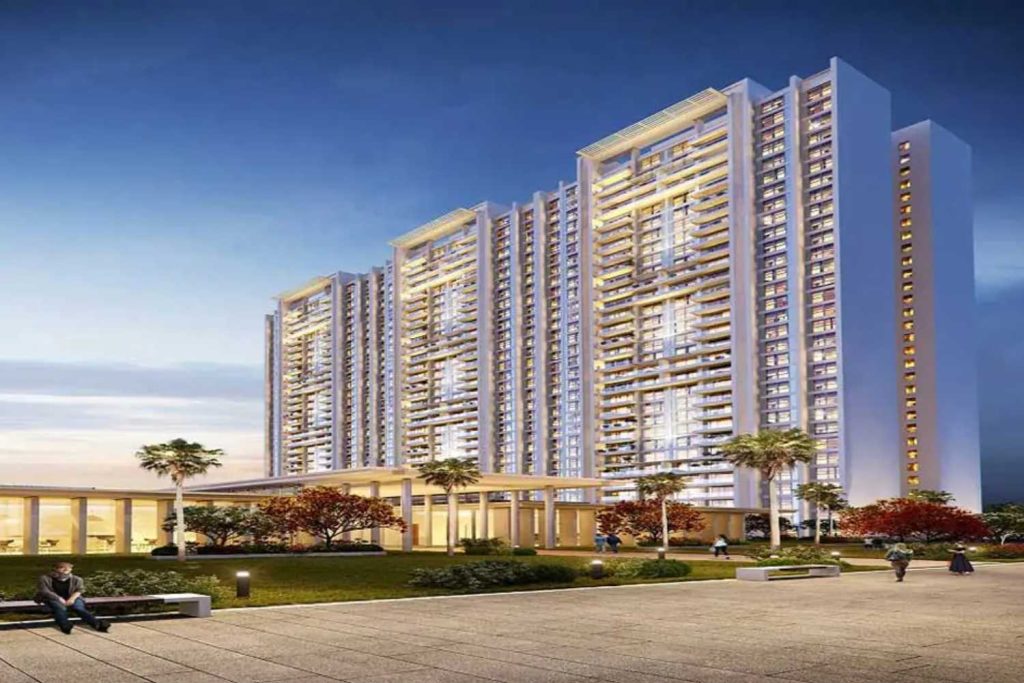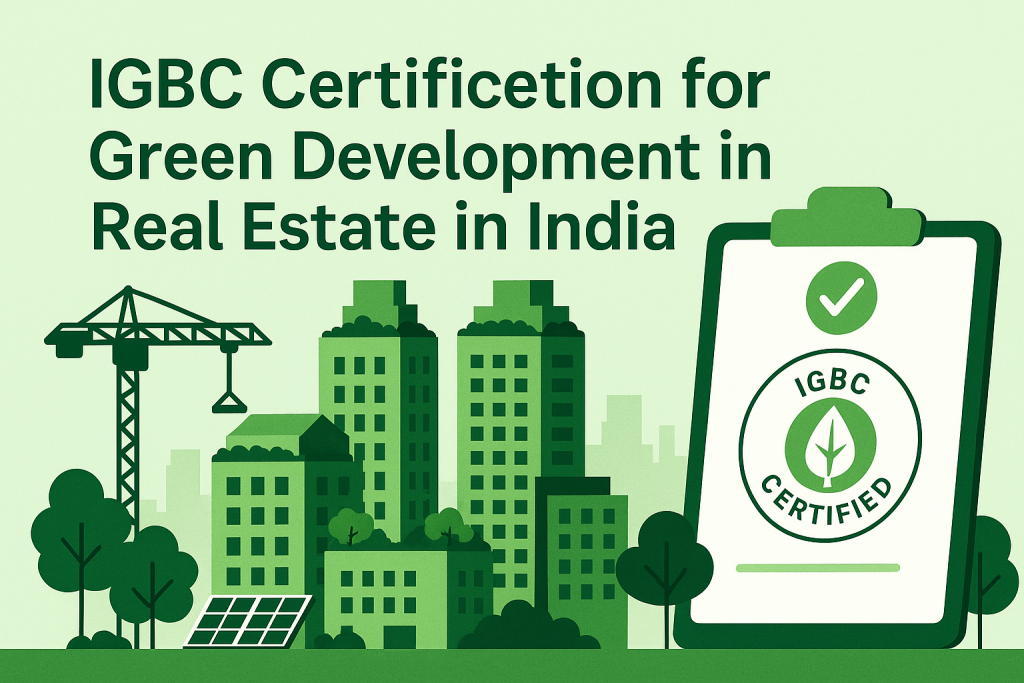Imagine waking up in a home that not only gives you comfort but also cares for the environment. That is the crux of sustainable living. With increasing pollution, frequent heatwaves, water shortages, and unpredictable weather patterns, India’s urban population is becoming more eco-conscious. As a result, eco-friendly homes are gaining popularity. They are not just about saving the planet – they offer better air quality, lower utility bills, and a healthier lifestyle.
India is already making progress. According to the Indian Green Building Council (IGBC), India ranks third globally in terms of green building footprint. That’s over 10 billion square feet of space that’s been designed with the planet in mind (IGBC). Clearly, people are waking up to the benefits of green living.

What is an Eco-Friendly Home?
An eco-friendly or green home is designed and built to be environmentally responsible. This home reduces its impact on the planet by using:
- Cross ventilation and skylights to minimize air conditioning needs.
- Natural, recycled or low-impact materials, such as bamboo, fly ash bricks, lime plaster.
- Non-toxic paints and adhesives that do not emit harmful gases (low or no VOC).
- Rainwater harvesting to reduce dependence on municipal water.
- Solar panels for renewable energy.
These homes often carry certifications that validate their sustainability claims:
| Certification | Description | Issuing Body |
| IGBC | Indian Green Building Council Certification | CII – Confederation of Indian Industry |
| GRIHA | Green Rating for Integrated Habitat Assessment | TERI & Ministry of New and Renewable Energy |
| EDGE | Excellence in Design for Greater Efficiencies | International Finance Corporation (IFC) |
Why Go Green? The Real Benefits for Homeowners
Going green isn’t just about doing good for the planet – it’s also about living better.
1. Lower Utility Bills
Green homes can cut energy consumption by 30% to 50%. With solar panels, LED lighting, and efficient appliances, your electricity bills can be significantly reduced. For example, according to MNRE, a typical 2 kW solar rooftop system can save about Rs. 10,000 to 12,000 per year.
2. Water Efficiency
Rainwater harvesting and greywater recycling can reduce water bills by up to 40%. Many buildings now use STPs (Sewage Treatment Plants) to reuse water for landscaping and flushing.
3. Healthier Indoor Environment
Green homes use materials that are free from volatile organic compounds (VOCs). This means cleaner indoor air, fewer allergens, and better respiratory health – especially important for children and elderly residents.
4. Higher Property Value
Certified green buildings have better resale value. They are preferred by modern buyers and often sell 5-10% higher than non-green counterparts. Some studies from CII suggest that IGBC-certified buildings see lower vacancy rates as well.
Government Support for Sustainable Housing in India
India’s central and state governments are actively pushing green development through various schemes and incentives.
| Initiative | Benefits |
| Section 80-IBA | Tax deduction for affordable housing that follows environmental standards |
| PM Surya Ghar Yojana | Up to ₹78,000 subsidy for rooftop solar installations |
| PMAY (Urban) | Encourages green and affordable housing with interest subsidies and faster approvals |
| Smart Cities Mission & AMRUT | Focus on energy efficiency, solar deployment, and green urban planning |
Additionally, property tax rebates are available in cities like Nagpur, where IGBC-certified buildings get up to 20% off on annual property taxes (Times of India).
Top Cities Promoting Eco-Friendly Housing
If you’re planning to buy a green home in India, here are cities actively leading the way:
| City | Notable Projects | Green Features |
| Gurugram | Tata La Vida, Godrej Astra | Air purification, solar lighting, IGBC Gold certified |
| Pune | Kolte-Patil Life Republic, VTP Pegasus | Solar water heating, green landscapes, recycled materials |
| Bengaluru | Total Environment Homes, SOBHA City | Rainwater harvesting, waste segregation, smart lighting |
| Hyderabad | My Home Avatar, Aparna One | Energy-efficient lighting, low-flow water fixtures |
| Kochi | Mather Green Hills | IGBC pre-certified homes, rooftop solar, STP for greywater |
These homes aren’t just sustainable – they’re future-ready.
What Today’s Buyers Are Looking For
Today’s homebuyers, especially millennials and NRIs, want more than granite countertops and wooden floors. They ask:
- Is the home solar-ready?
- Are rainwater harvesting and greywater systems in place?
- What materials were used in construction?
- Does it have an IGBC or GRIHA rating?
A recent Knight Frank India report shows that over 70% of Indian buyers under age 40 consider sustainability as a major decision factor in home buying.
How to Spot a Truly Eco-Friendly Home: Buyer Checklist
Here’s a quick buyer’s guide to avoid greenwashing:
- Check for IGBC/GRIHA/EDGE certification badges.
- Ask for documentation on solar, rainwater, and energy setups.
- Look for efficient windows (double-glazed), insulation, and natural ventilation.
- Ask for lifecycle cost analysis from the developer.
- See if the community has composting and green waste management.
Cost vs Value: Is It Worth the Investment?
Yes, green homes might have a 2-5% higher upfront cost, but the savings far outweigh the price.
| Feature | Traditional Home | Green Home |
| Monthly Electricity Bill | ₹1000 – ₹1500 | ₹500 – ₹700 |
| Annual Water Bill | ₹ 6,000 | ₹ 3,600 |
| Maintenance Cost | High | Lower due to efficient systems |
| ROI on Solar | N/A | Payback in 4-5 years |
(Source: TERI, IGBC case studies)

The Road Ahead: Green Homes by 2030
The Indian government aims to make 50% of all new buildings green by 2030. With the rise of smart cities, clean energy missions, and increasing climate literacy, developers are already investing in eco-friendly construction.
Private players like Godrej Properties, Tata Housing, and Total Environment are pledging green-first designs. Meanwhile, affordable housing projects under PMAY are being encouraged to adopt EDGE and GRIHA guidelines.
Conclusion: Time to Make a Green Choice
Eco-friendly homes are not a luxury. They are an investment in your health, savings, and future. Whether you’re a first-time homebuyer, a growing family, or a smart investor, choosing sustainability is no longer optional – it’s the smart thing to do.
- Ready to switch to a cleaner, greener way of life?
- Start exploring certified green homes in your city.
- Talk to developers who follow IGBC or GRIHA standards.
- Let your next home reflect your values.
Helpful Resources: IGBC Green Homes Program, GRIHA – Green Building Guidelines, PM Surya Ghar Rooftop Yojana, MNRE – Ministry of New and Renewable Energy, and Smart Cities Mission.
Stay informed. Choose smart. Live green.
